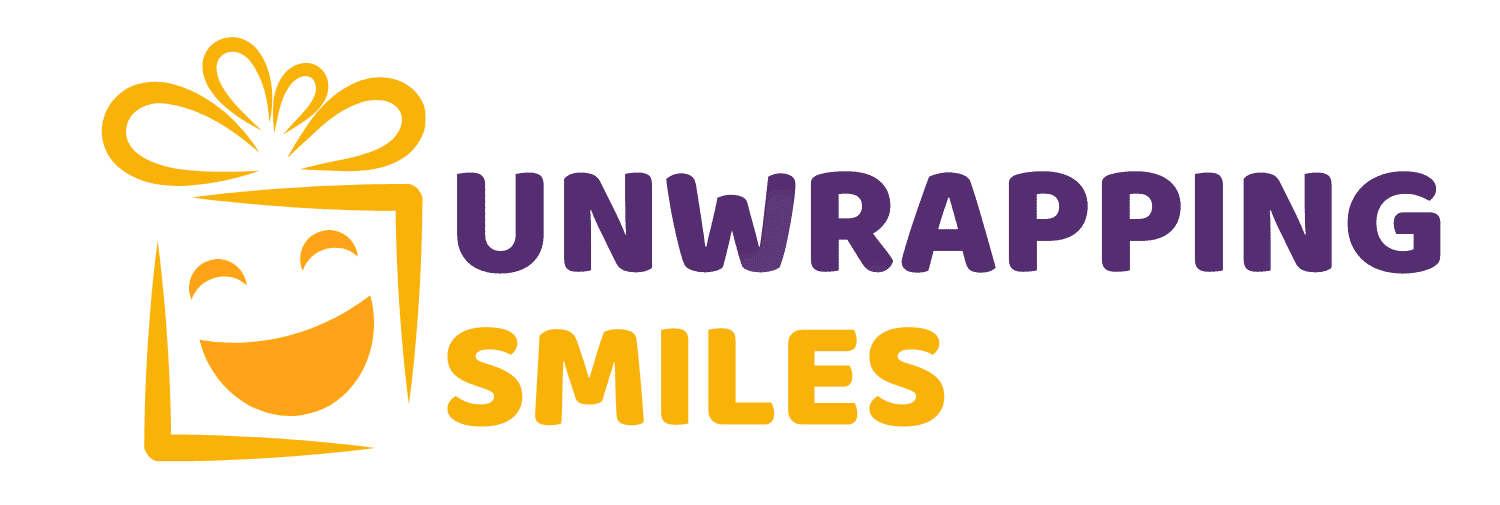Managing money is a skill everyone needs, but it’s not always easy to learn.
For employees, balancing work, bills, and savings can feel overwhelming. That’s why offering money management activities for employees is so important.
These activities teach simple ways to save, budget, and make smarter financial decisions.

They also help reduce stress and boost confidence when it comes to handling money. From workshops to games, these ideas make learning about money fun and practical.
Supporting employees with these tools shows you care about their financial well-being.
Use these links to jump ahead:
25 Money Management Activities For Employees
Helping employees with their money skills is a great way to boost morale and productivity.
The list below offers creative and effective ways to teach financial wellness.
Whether it’s learning through games, interactive tools, or personal coaching, these activities are easy to implement and make a big impact.
Let’s explore the top money management activities for employees to get started.
Workshops and Seminars
Workshops and seminars are a great way to learn about money. Experts teach you how to budget, save, and manage debt.
These sessions are easy to follow and full of real-life examples. You can ask questions and get advice that fits your needs.
Workshops also give you tools to improve your finances step by step.
Whether you’re a beginner or want to learn more, these sessions can help you gain confidence with your money.
Budgeting 101
Teach employees how to create and stick to a personal or household budget.

Creating a budget is like making a plan for your money. It helps you see how much money you have, where it is going, and how you can save more.
Start by listing your income and all your monthly expenses. Then, divide your money into categories like rent, groceries, bills, and savings.
Stick to this plan by tracking your spending every week. A budget is a guide to make sure your money is used wisely.
Smart Debt Management
Focus on strategies for reducing and managing debt effectively.
Managing debt is important to reduce stress and save money. Begin by listing all your debts, including credit cards, loans, or other payments.
Prioritize paying off debts with the highest interest rates first. Always make at least the minimum payment to avoid extra charges.
Avoid adding new debt by spending only what you can afford.
Over time, paying small amounts consistently will help you clear debt and build financial freedom.
Understanding Credit Scores
Explain how credit scores work and how to improve them.
Your credit score shows how good you are at borrowing and paying back money. A high score means you can get loans at lower interest rates.
To improve your score, always pay your bills on time. Keep your credit card balances low and avoid opening too many new accounts at once.
Check your credit report regularly to make sure everything is correct. A good credit score makes life easier and saves money in the long run.
Savings Strategies
Highlight methods to save for short-term and long-term goals.

Saving money helps you prepare for both small and big goals.
For short-term goals, like a vacation or emergency fund, save a little from every paycheck. Use a separate savings account so you’re not tempted to spend it.
For long-term goals, like buying a house or sending kids to college, look for savings plans that earn interest over time.
Start small if you need to, but be consistent. Every dollar saved brings you closer to your goals.
Retirement Planning Basics
Discuss retirement options like 401(k)s, IRAs, and company pension plans.
Retirement planning is about saving now so you can enjoy life later.
Options like 401(k)s, IRAs, or pension plans can help you save money for retirement.
If your company offers a 401(k), contribute as much as you can, especially if they match your contributions.
Start early, even if it’s a small amount because the money will grow over time. Don’t wait until later to think about retirement.
Investment Basics
Provide an introduction to stocks, bonds, and mutual funds.
Investing helps your money grow over time. Stocks, bonds, and mutual funds are common ways to invest.
Stocks mean owning a small part of a company. Bonds are like loans you give to companies or governments, and they pay you back with interest. Mutual funds are a mix of stocks and bonds managed by experts.
Start by learning the basics and investing small amounts. Investments carry risks, but over time, they can build wealth for your future.
Interactive Activities
Learning about money doesn’t have to be boring. Interactive activities make it fun and hands-on.
You might track your expenses for a month or create a savings plan. These activities help you see where your money goes and how to save more.
Role-playing financial decisions, like buying a house, helps you understand real-life choices.
It’s all about practicing and learning in a way that feels easy and useful.
Expense Tracking Challenge
Encourage employees to track their monthly expenses and identify areas to cut back.

Tracking your expenses is the first step to taking control of your money.
For one month, write down everything you spend. Include even small purchases like coffee or snacks.
At the end of the month, review your list and look for areas where you can cut back.
For example, eating out less or canceling unused subscriptions can save money. This activity helps you see where your money goes and make better choices.
Savings Goals Workshop
Help employees set and prioritize financial goals.
Setting savings goals gives you a clear plan for your money.
In this workshop, we help you identify what you want to save for – like a vacation, a new car, or an emergency fund. Break your goals into short-term and long-term categories.
Then, create a step-by-step plan to reach each goal, starting with small, realistic amounts.
This process makes saving less overwhelming and keeps you motivated to stick to your plan.
Simulated Financial Scenarios
Use role-playing to explore financial decisions (e.g., buying a car or house).
Practicing real-life money decisions is a great way to learn.
In this activity, you’ll role-play situations like buying a house, choosing a loan, or planning a monthly budget.
You’ll make decisions based on a limited budget and learn about trade-offs.
For example, if you spend more on a car, you might have less for savings.
This hands-on experience helps you understand financial choices better and prepare for real situations in the future.
Emergency Fund Challenge
Motivate employees to save for an emergency fund with an internal competition.

An emergency fund is money saved for unexpected expenses, like medical bills or car repairs.
In this challenge, employees compete to save a specific amount within a set time.
Start small, aiming for $500 or one month’s worth of expenses. Use automatic transfers to a savings account to make it easier.
The challenge adds a fun, motivational element, and prizes can be given to those who reach their goal first.
Building an emergency fund reduces stress and gives you peace of mind.
Debt Snowball Simulation
Teach the debt snowball or avalanche method for paying down debt.
The debt snowball method helps you pay off debt step by step. In this simulation, employees learn to list their debts from smallest to largest.
Focus on paying off the smallest debt first while making minimum payments on the others.
Once the smallest debt is paid, use that payment amount to tackle the next debt. The avalanche method works similarly but prioritizes high-interest debts first.
This hands-on activity shows how small, steady payments can lead to big results over time.
Games and Competitions
Who doesn’t love a little friendly competition?
Games like financial trivia or budgeting challenges make learning about money exciting.
You can play board games that teach budgeting or join a savings race with your coworkers. Competitions keep everyone motivated to save, budget, or reduce debt.
It’s a fun way to build money skills while connecting with others. Plus, there’s often a prize to make it even better!
Personal Finance Trivia
Host a quiz competition with questions on finance basics.

Turn to learn about money into a fun quiz competition!
Create simple questions about budgeting, saving, credit scores, and more. For example, ask, “What is the first step in creating a budget?” or “What does APR stand for?”
Divide employees into teams and offer small prizes for correct answers.
This activity makes financial education engaging and helps employees learn key concepts in a fun way.
Budgeting Board Game
Play games like Monopoly or financial literacy board games.
Games like Monopoly or financial literacy board games teach money skills in a playful setting.
Employees manage virtual money, make decisions about spending and saving, and learn how to handle unexpected expenses.
These games show how planning can make a difference.
It’s a relaxed, interactive way to reinforce budgeting and money management strategies while building teamwork.
Savings Race
Organize a friendly competition to see who can save the most in a specific timeframe.
Encourage employees to save money by turning it into a friendly competition.
Set a timeframe, like one or two months, and challenge participants to save as much as possible.
Employees can share tips or use budgeting tools to track progress. Recognize and reward those who save the most, whether it’s a small gift or public acknowledgment.
This activity inspires healthy habits while making saving exciting.
Financial Crossword or Puzzle
Create crossword puzzles with financial terms.

Make financial literacy fun with crossword puzzles or word searches about money terms.
Include clues like “A plan for spending and saving” (answer: Budget) or “Money saved for unexpected expenses” (answer: Emergency Fund).
Distribute puzzles during breaks or team meetings.
This lighthearted activity strengthens financial vocabulary and keeps employees engaged in learning about personal finance.
Digital Tools and Apps
Technology makes managing money simple. Budgeting apps like Mint or YNAB help you track spending and set goals.
Online calculators show you how savings grow or what loan payments look like. Virtual investment simulators let you practice investing without risk.
These tools are easy to use and fit right into your daily life. With a few clicks, you can take control of your finances and plan for the future.
App Training Session
Introduce employees to budgeting apps like Mint or YNAB.
Budgeting apps like Mint or YNAB (You Need A Budget) make managing money easier.
Host a training session to show employees how to use these apps to track expenses, set savings goals, and manage budgets.
Demonstrate features like syncing bank accounts, categorizing spending, and setting alerts for overspending.
These apps simplify financial tracking and help employees stay on top of their finances with just a few taps on their phones.
Online Financial Calculators
Teach employees to use tools to calculate savings, interest, or loan payments.

Financial calculators are great tools to help plan and manage money.
Teach employees how to use online calculators to figure out savings growth, monthly loan payments, or interest on investments.
For example, show how a retirement calculator can estimate how much to save for the future.
These tools make financial planning less intimidating and more accessible, helping employees make informed decisions about their money.
Virtual Investment Simulations
Use apps or platforms that simulate investing in stocks and mutual funds.
Simulated investing platforms let employees practice buying and selling stocks, bonds, or mutual funds without real money.
These tools mimic real-world markets, helping employees learn how investments work, track performance, and understand risk.
Employees can experiment with creating diversified portfolios and see the long-term effects of different strategies.
This hands-on experience builds confidence and knowledge about investing for their financial future.
One-on-One Counseling
Sometimes, you just need personal advice. Financial counseling gives you a chance to talk to an expert about your money.
They can help you create a budget, reduce debt, or plan for retirement. The advice is tailored to your needs, so it’s easy to follow.
You can ask questions and get clear answers. This personalized support helps you make better decisions and feel more in control of your money.
Personal Financial Coaching
Offer sessions with financial advisors for personalized guidance.

One-on-one coaching with a financial advisor can make a big difference. These sessions give employees personalized advice based on their financial situation and goals.
Advisors can help with budgeting, saving, investing, or planning for major expenses.
Employees can ask specific questions and get tailored guidance to improve their finances.
This focused approach builds confidence and helps employees take control of their money.
Debt Reduction Plans
Provide tailored advice to employees struggling with debt.
Debt can feel overwhelming, but a clear plan makes it manageable.
Provide employees with tailored advice to tackle their debt, whether it’s credit cards, loans, or other obligations.
Advisors can help them prioritize payments, negotiate better terms, or use strategies like the snowball or avalanche method.
By creating a step-by-step plan, employees can reduce their debt faster and save money on interest.
Retirement Contribution Review
Help employees assess and optimize their retirement contributions.
Saving for retirement is essential, but many people don’t know if they’re on the right track.
Help employees review their 401(k), IRA, or other retirement accounts to ensure they’re contributing enough.
Show them how employer matching works and why starting early is so important.
Employees can learn how to adjust their contributions to maximize growth over time. This review sets them up for a more comfortable future.
Incentives and Financial Resources
Saving money is easier when you’re motivated. Incentives like company-matched savings programs encourage you to save more.
Recognition for financial milestones, like paying off debt, keeps you inspired. Resources such as books, videos, or newsletters provide helpful tips and ideas.
These tools and rewards show that improving your finances can be rewarding and exciting. They give you the push you need to reach your goals.
Matching Savings Program
Encourage employees to save by offering company-matched savings up to a limit.

Help employees build their savings by offering a company-matched savings program.
For every dollar an employee saves, the company matches a portion up to a set limit. This motivates employees to save more and reach their goals faster.
Whether it’s for an emergency fund, education, or retirement, matching contributions show that the company values financial wellness and is invested in its employees’ future.
Financial Milestone Recognition
Reward employees for reaching savings or debt reduction goals.
Celebrate employees’ financial achievements to keep them motivated.
Recognize milestones like paying off debt, reaching savings goals, or improving credit scores.
Rewards can include certificates, gift cards, or even public acknowledgment.
These small incentives encourage positive financial behavior and create a supportive environment where employees feel proud of their progress.
Financial Literacy Newsletter
Send regular tips and articles on managing money.
Share financial tips and advice regularly through a company newsletter.
Include easy-to-understand articles on budgeting, saving, debt management, and investing.
You can also share success stories from employees or highlight useful tools and apps.
Keeping financial topics in focus helps employees stay informed and motivated to make smart money choices.
Resource Library
Provide access to books, videos, or online courses on money management.

Provide a library of financial resources, including books, videos, and online courses.
Cover topics like creating budgets, saving for retirement, or understanding investments.
Make these resources easily accessible online or in a common area.
This library gives employees the tools to learn at their own pace and build the skills they need to manage their money confidently.
Conclusion
Teaching employees about money management is more than just a helpful activity – it’s an investment in their future.
By offering fun and practical tools like workshops, games, and personal coaching, you give them the confidence to handle their finances better.
When employees feel secure about their money, they bring their best to the workplace. Start incorporating these money management activities for employees today and create a positive impact that benefits both your team and your organization.
Engage With Us
We’re here to help you empower your team with the best money management activities for employees.
Let’s work together to create a financially confident and stress-free workplace.
Have questions or need customized ideas for your team? Reach out to us today, and let’s start building a brighter financial future for your employees!


![41 Staff Engagement Ideas & Activities [For Great Teamwork] Fun Staff Engagement Ideas and Activities](https://unwrappingsmiles.com/wp-content/uploads/2024/10/Fun-Staff-Engagement-Ideas-and-Activities-150x150.png)
![29 Workplace Wellness Ideas and Activities [Employees Must Try] Workplace Wellness Ideas and Activities](https://unwrappingsmiles.com/wp-content/uploads/2024/11/Workplace-Wellness-Ideas-and-Activities-150x150.png)
![101 List Of Good Compliments For Boyfriend [Girls Must Know] 101 List Of Good Compliments For Boyfriend](https://unwrappingsmiles.com/wp-content/uploads/2024/05/101-List-Of-Good-Compliments-For-Boyfriend-150x150.jpg)

